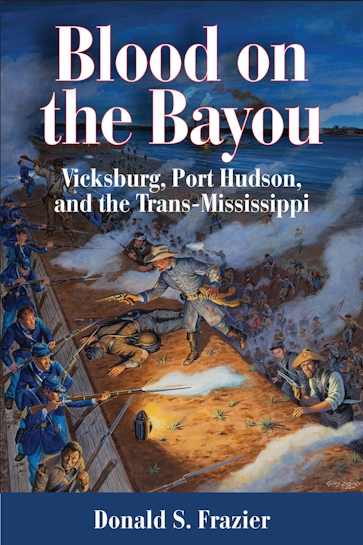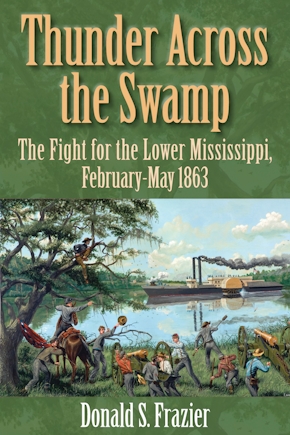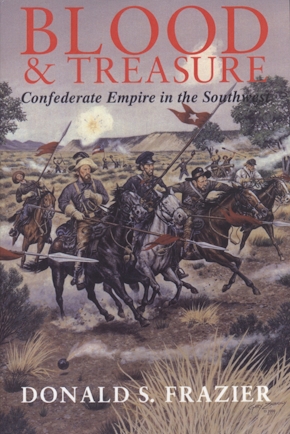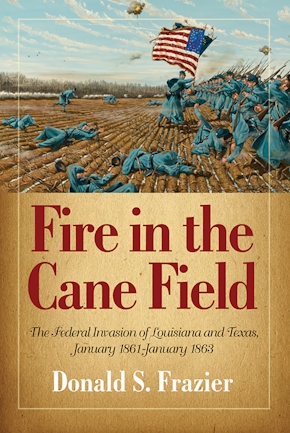Blood on the Bayou
Vicksburg,Port Hudson,and the Trans-Mississippi
978-1-933337-63-0 Cloth
6 x 9 x 0 in
484 pp. 125 b&w illustrations. 30 maps.
Pub Date: 03/10/2015
Available
This book is new scholarship and, most importantly, fresh research that challenges many commonly held notions of the Vicksburg and Port Hudson campaigns. In the past, the movement of large armies and the grand assaults garnered the most attention. As Blood on the Bayou reveals, small unit actions and big government policies in the Trans-Mississippi did as much to shape the outcome of the war as did the great armies and famous captains of legend and lore. No student of the Civil War should ignore this book. Scholars of Vicksburg and Port Hudson will find their studies incomplete without a thorough examination of this work.
As with the other books in the Louisiana Quadrille series, the military campaigns remain front and center. I trace the movements of obscure regiments and battles fought on unfamiliar trans-Mississippi landscapes in June and July, 1863, and tell a little-known aspect of the sieges of Vicksburg and Port Hudson. I examine the evolution of Federal and Confederate strategy and sketch the leaders tasked with carrying these plans forward. There is enough combat to satisfy even the most ardent student of campaigns and commanders.
The sources, however, revealed an almost obsessive concern over slavery by both sides. Actually, these soldiers, civilians, and politicians did not fret over the institution of slavery as much as control over the slaves themselves. Both Federal and Confederate authorities seemed preoccupied with who physically controlled the enslaved population. This led me to review Republican views on this subject, and especially those held by Abraham Lincoln. The tug-of-war over people—whom some considered persons held in bondage and others considered human property—also caused me to reexamine the peculiar institution as a salient feature of Confederate national identity. A greater appreciation for the causes of the war emerged. While states’ rights certainly provided a framework and context for the argument, slavery caused the war, not vice versa.
Physical control of the slave population impacted how the Federal Government conducted the war. When war broke out, slaves emerged first as “contraband,” then morphed into “self-emancipated” persons, before becoming the raison d’être of the Mississippi Valley campaigns in 1863. The African-Americans became plunder, if you will. I came to the conclusion that the gathering of these persons drove, in part, Union military strategy in the Mississippi Valley. Lincoln wanted slaves removed from southern owners, concentrated in areas convenient to Union logistics centers, and then redistributed to serve as soldiers or farmers on behalf of the United States. The longer the military campaigns in the Mississippi Valley dragged on, the more Federal officials could feed liberated slaves into the system.
This strategy held that, once Union troops had removed slaves from bondage and repurposed them to other tasks, it would be nearly impossible for their former masters to re-enslave them. No matter the outcome of the war, the Federal government set out to break slavery—forever. Fearing a rapid collapse of the Confederacy, abolitionists intended to make sure that readmitted states did not reestablish slavery. Remember, slavery was then a state prerogative. Passage of the Thirteenth Amendment still lay months into the future.
Concurrently, Lincoln believed Black troops would help achieve victory and then secure the peace. One the shooting ended these African-American regiments might serve as an army of occupation. The largest concentration of slaves lay in the Mississippi Valley and this population needed to be under Federal control. The Rebel forts at Vicksburg and Port Hudson were impediments. Even so, despite the presence of these Confederate citadels, US troops could remove the African-American population of this region into zones of their choosing with increasing impunity. The fall of these positions facilitated commerce and navigation on the Mississippi. Yet, the great gathering of African-Americans began, and continued, notwithstanding the Rebels in the earthworks.
About the Author
Published by State House Press



